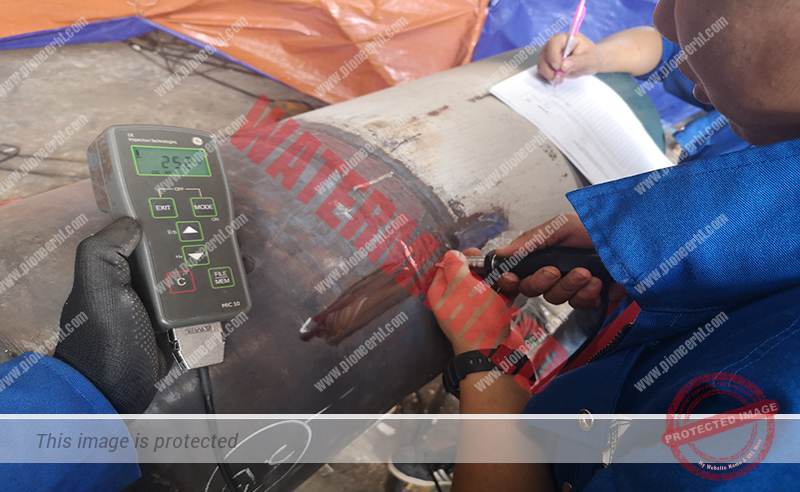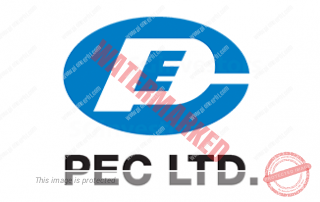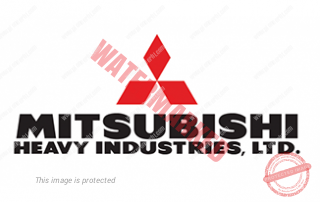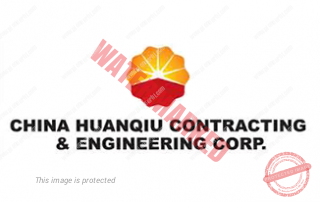Do You Have A Project We Can Help With?
PWHT / Pre-heating
Application and Control of Preheat
General
Preheating is the application of heat to a joint immediately prior to welding usually heating using electric current flowing through resistance coils.
Preheating Temperature
- Temperature of the workpiece in the weld zone immediately before any welding operation (including tack welding).
- Normally expressed as a minimum but can also be specified as a range.
Interpass Temperature
- Temperature of the weld during welding and between passes in a multi-run weld and adjacent parent metal immediately prior to the application of the next run.
- Normally expressed as a maximum but should not drop below the minimum preheat temperature.
Preheat Maintenance Temperature
- Minimum temperature in the weld zone which should be maintained if welding is interrupted.
- Should be monitored during interruption.
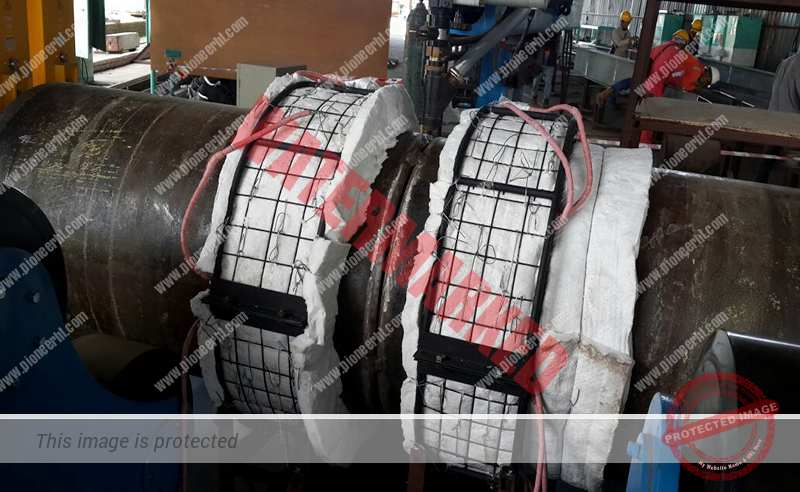
Post weld Heat Treatment(PWHT)
Post weld heat treatment has to be applied to some welded steels to ensure that the properties of the weldment are suitable for the intended applications.
The temperature at which PWHT is usually carried out well below the temperature where phrase changes can occur, but high enough to allow residual stresses to be relieved quickly and to soften(temper) any hard regions in the HAZ.
Note* There are circumstances when a welded joint may need to be normalized to retore HAZ toughness, these are relatively rare and it is necessary to ensure that welding consumables are carefully selected because normalizing will significantly reduce weld metal strength.
The major benefits of reducing residual stress and ensuring that the HAZ hardness is not too high for steels for particular service applications are:
- Improves the resistance of the joint to brittle fracture.
- Improves the resistance of the joint to stress corrosion cracking.
- Enables welded joints to be machined to accurate dimensional tolerances.
Because the main reason for and benefit of PWHT is to reduce residual stresses, PWHT is often called stress-relief.
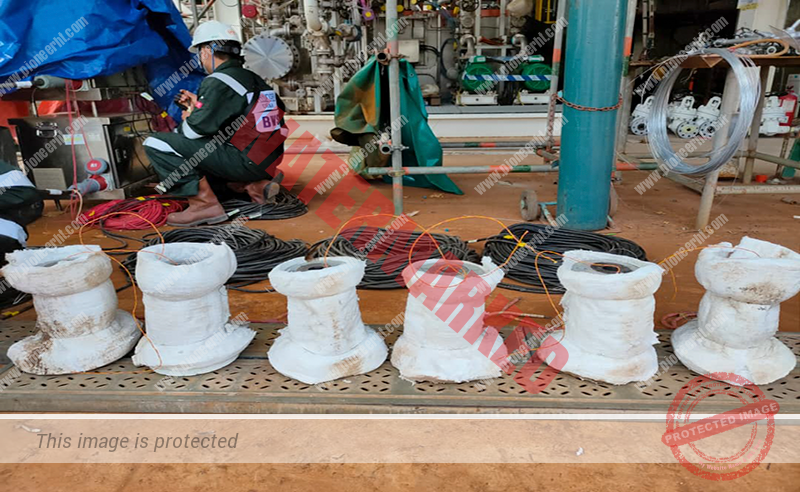
Hardness Test
Objective
The hardness of a metal is its’ resistance to plastic deformation, determined by measuring the resistance to indentation by a particular type of indenter.
A steel weldment with hardness above a certain maximum may be susceptible to cracking, either during fabrication or in-server and welding procedure qualification testing for certain steels and application requires the test weld to be hardness surveyed to ensure no regions exceed the maximum specified hardness.
specimens prepared for microscopic examination can also be used for taking hardness measurements at various positions of the weldment, referred to as a hardness survey.
Methods
There are three widely used methods:
- Vickers – uses a sqaure-based diamond pyramid indenter.
- Rockwell – uses a diamond cone indenter or steel ball.
- Brinell – uses a ball indenter.
The hardness value is given by the size of the indentation produced under a standard load, the smaller the indentation, the harder the metal.
Equipment Supply
Pioneer Heat Treatment has a complete line of testing equipment that can be used to inspect and analyse the results of the various treatments performed in the plant. Pioneer Heat Treatment quality system is certified to BS EN ISO 9001:2008 and is compliant with TUV NORD
requirements.
The equipment used are:
- 3 Way Power Regulator (Mini, Pioneer)
- SCR Power Regulator with Programmer (Jemix, Japan)
- Power Transformer 6 way with Programmer
and Temp. Controller (UK) - 6 Points Temperature Controller with Programmer (UK) for 3 Way Poewr Regulator
(Item A) - 12 Points temperature recorder (Chino)
- Thermocouple Attachment Unit (Battery Discharge Type)
- Ceramic Pad Heater (various CP Type)
- Hydrotest Equipment
- Hydraulic Tensioning
- Hydraulic Torque
- Tensioner
- Torque Tool
Bolting
In some projects, Hydraulic Controlled Bolting and Hot Bolting were used for pre-commissioning and commissioning while Hydraulic control bolting was used to carry out bolt tightening.
Controlled Bolting
Controlled bolting is the process for correctly applying a known load to a mechanical joint to ensure it’s joint integrity.
As bolted joints are often one of the most common elements in industrial components, the reliability of each joint is of the utmost importance. The physics that explains fastening devices for bolting are well known, and over the years, we’ve developed accurate means of measuring and applying force to joints consistently.
Joint Integrity
When it comes to bolted joints, the significance of the bolted connection is often the contributing factor in deciding the importance of its joint integrity. Pressure vessels and pipe flanges require leak-free fittings to ensure their safe operation, and the machinery industry needs to guard against vibrations. More casual applications, such as the attachment of fascias or covers to equipment, may only need to be manually tightened to perform their required tasks.
For joint integrity operations, controlled bolting is very important, with bolt load accuracy being the primary focus. This method of tightening fasteners ensures that both the tightening and loosening of bolts are carried out in a controlled and safe manner. Therefore, controlled bolting is used to either secure the integrity of the joint or safeguard against damage to it during disassembly.
Torque & Tension Techniques
Applying torque or tension forces to mechanical connections are the two most commonly used approaches used to tighten a bolt. Torque tightening utilizes the helix of the bolt thread to guide the nut down the bolt threads, which in turn applies a bolt load. This is usually carried out using hydraulic torque wrenches. Whereas Tensioning applies a direct tensile (stretching) load to the bolt avoiding the torsional (twisting) reaction forces associated with torque.
Hot Bolting
Hot bolting is a technique of re-tightening or completely replacing the connection bolts which hold together sections of piping. The added difficulty of this procedure is the fact that the pipes are left “live” and in use during this process, which gives rise to the term “hot” bolting.
By systematically replacing the bolts around a seal, the integrity of the structure suffices to keep the seal intact while the joint is upgraded. It is also common practice to loosen, lubricate and then re-tighten the same bolts back into place, which again serves to increase the durability and the lifespan of the connection.
Although normally carried out on pipes that contain a flow of gas or liquid from the fossil fuel industry, hot bolting helps to maintain and increase the structural integrity of the piping system. It does this by strengthening the weak links that are detected in the network and so making the network safer and more robust.

Clients We Have Collaborated With
Our provision of excellent services has earned us great credibility and reputation in the heat treatment industry where many companies have approached us for partnerships.

